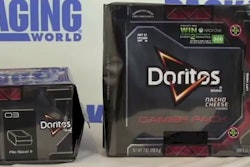1. Demand interchangeability. Make sure all the inspection equipment matches. Oddball machines can throw a wrench into the works. Typically, several employees really know the equipment. Consider that tribal knowledge. Tribal knowledge of that oddball piece of equipment is more rare than water in the Sahara; interchangeability helps ensure you won’t have to rely on it for survival. Can the data from one machine be transferred to other equipment? Can it stop upstream and downstream modules? External signaling with other equipment may be a requirement.
2. Check, and then check again. Have the operators check inspection equipment on a regular basis. QAS forms are in place for things they should check hourly; these checks are critical. Operators should be filling out quality assurance sheets all the time, tracking and tracing according to your regimen. Then you can consult the forms and see when there was a problem, or when one began. At times, you may run production without certain things or machines; if the operator doesn’t quite test correctly, you will be able to see that. So test and retest all the time.
3. Proper spacing is essential. For checkweighing, make sure you can space the products appropriately coming into the machine; this will assure your ability to weigh them properly. If you do not have control of your products, they won’t be weighed properly or will be falsely rejected because the equipment can’t read them properly. Conveyance speeds for inspection should be matched and rated to product flow to avoid a bottleneck. Make sure you select a checkweighter that can handle the pitch (i.e., the distance between packages) your business requires.
4. Size your apertures correctly. In metal detection applications, make sure your aperture is the right size. Do your research, or it can impact the sensitivity or readings and create too many false rejections. With the wrong aperture size, you won’t get the inspection you expect from your equipment. Metal detectors are not one-size-fits-all.
5. Isolation and vibration control are additional keys to good metal detection. The environment is key to metal detection. Recycled cases, cartons, and overwraps may have tramp metal in them, so the metal detector doesn’t know if it is reading the product or the package. What often happens is recalibration of detectors, resulting in tolerances larger than they should be and distorted pass readings just to get materials through. This doesn’t protect the consumer as it should, and places operations at risk for the sake of expediency.
6. If what you’re looking to see doesn’t float, X-ray may be your answer. X-ray is very good at inspecting things that don’t float. There’s a misconception that X-rays see everything. X-ray inspection is not suited for seeing wire ties or plastic tubing. X-ray does well with glass; it can see stainless and all metals the same. The technology has come a long way; it is much more reliable and less sensitive to heat and dust than it used to be, as well as much cheaper. Today, X-ray inspection systems cost a third to a half of what they did 15 years ago.
7. Educate operators. Companies must educate the operators about the amount of X-ray to use in inspection, as its effects compare to being in the sun. Make sure they just don’t stick their heads in the machine; it’s not inherently dangerous, but education is needed about proper levels. Operators need to know it’s safe, or else they’ll call OSHA. You don’t want that.
8. Consider all scenarios. How does your machine handle a stream of rejects (e.g., 15 in a row)? Does it cause a jam, or jam up downstream? Think about a scenario where you reject a significant amount of product; does your equipment have built-in sensors to let operators know there’s a stream of rejects? It should.
Liked this article? Download the entire playbook here.






















